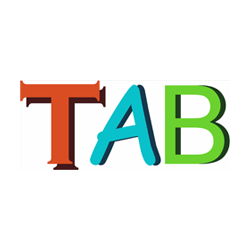The Attachment Test by Diane Jaquith
Choice-Based Art
Choice-based Art classrooms are working studios where students learn through authentic art making. Control shifts from teacher to learner as students explore ideas and interests in art media of their choice. This concept supports multiple modes of learning to meet the diverse needs of our students. Learn more at teachingforartisticbehavior.org.

I count two… three… four attachments!” Sarah, a fourth-grader, fills out a rubric and signs her name under two other names. With her careful observation, Sarah’s classmate will pass the Attachment Test. This authentic assessment of learning invites students to play with materials, develop techniques, and apply new strategies to their work.
In our choice-based classroom, this is an annual prerequisite to working in the 3-D Design Studio for students in third through fifth grade. Our art program is modeled after the habits of established artists and I facilitate experiences in which artistic behaviors can emerge. The Attachment Test summons artistic behaviors by encouraging students to learn about the properties of materials through play. My adult artist friends are quite scientific about their materials—the chemistry of paint media, the physics of balance, the biology of plant fibers—and learn through observation and experimentation. Students of visual art can do the same.
I first implemented The Attatchment Test over a decade ago as an intervention in response to students’ over-reliance on tape and glue to hold things together in their three-dimensional artwork. Glue is less flexible than tape but more enduring, especially for paper and cardboard because it permeates the fibers. Tape lends itself well to improvisation because it sticks immediately but it is more expensive than glue. Neither works perfectly with every material found in the art room.
“You can wrap, tie, insert, wedge, notch, stitch, fold, clip, weave, twist, and knot objects together. Look over these materials and see what they can do for your solution to the Attachment Test. Maybe you will be the first to invent a whole new way of attaching,” I tell students eager to get started.
A re-purposed marker box holds brads, string, paper clips, buttons, elastics, wire, ribbon, foam, rubber stuff, foil, pipe cleaners, and other unusual items found at the local recycle center. “As you work, remember to think like an artist. Your solution must look like more than just a bunch of stuff stuck together. It needs to be artwork that shows a design or represents something recognizable.” As classmates count attachments, they also check for aesthetic appeal. If the solution has none, it is not ready to pass the Attachment Test.
My school follows a protocol for student learning objectives called “Framing the Learning” (Paula Rutherford, 2008). For every lesson, we display a clear rationale and outcomes using three questions: What are we learning? Why are we learning this? How will we know we have learned this? This exercise is extremely helpful for teachers to stay on track with goals and objectives.
For The Attatchment Test Lesson, learning is framed in this way on a classroom chart:
(1) What? Artists play with materials to discover how they can serve artistic purposes;
(2) Why? Materials have unique properties that can affect how they work together; and
(3) How? You will experiment with materials and attachment strategies to create an artwork held together without glue or tape.
For students to be successful with this activity, a set of parameters will keep them engaged in meaningful work:
(1) Everyone produces his or her own object
(2) Third-graders use at least six different materials (eight in fourth grade, 10 in fifth grade);
(3) Third-graders demonstrate at least three different attachment strategies (four in fourth grade, five in fifth grade);
(4) Students will ask three classmates to review their Attachment Test solution and fill out a rubric.
The Teacher will complete the final review, checking for these criteria:
(1) The minimum number of materials and attachments are included;
(2) The object is stable (nothing falls off when shaken); and
(3) The work shows artistic thinking.
Students participate with enthusiasm and feel triumphant upon passing the test. While tape and glue (especially hot glue) continue to be favored attachment methods, students’ mindsets about alternative strategies are growing.
For example, a student recently challenged herself by constructing a three-dimensional house using no glue or tape. The sides were lashed together with pipe cleaners through punched holes. Others have created moving vehicles, elevators, real and fantasy creatures, exotic plant life and complex symmetrical designs using attachment strategies.
Everyone who tries the Attachment Test passes by summoning his or her curiosity, patience, and playfulness. Just as a deep-water test determines which swimmers may swim out to the raft, the Attachment Test acknowledges students who have practiced with materials and are now empowered with a toolbox of strategies for future endeavors.
Diane B. Jaquith is an elementary art teacher in Newton, Mass. She is a co-founder of the Teaching for Artistic Behavior organization, a co-author of “Engaging Learners through Artmaking: Choice-Based Art Education in the Classroom” and co-editor of “The Learner-Directed Classroom: Developing Creative Thinking Skills through Art.”
Teaching for Artistic Behavior, USA

PROFILE
TAB is a community of educator mentors advancing the creative confidence of all learners through choice and student agency.
